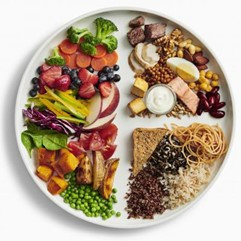March is Nutrition Month - "Bring a Natural Balance to Nutrition"

Healthy eating is a cornerstone of managing diabetes, staying in good health and feeling your best. Dietitians are specialy trained Healthcare Professionals who can help you navigate food information and create a healthy eating plan that suits your needs and routine. Not everyone living with diabetes has access to a dietitian who can translate the specialized research, and science in terms that you can understand and translate into your daily life. The Dietitians of Canada Nutrition Month Campaign is aimed at helping Canadians access the expertise of dietitians to help bring a natural balance to nutrition. It encourages people to seek access to a Registered Dietitian as a resource for healthy living and to get support to manage chronic disease to create a healthier tomorrow.
|
 |
| Food is fuel, food is medicine, and food provides us with opportunities to gather, enjoy each other, and keeps us healthy. |
If you are looking to connect with a dietitian to discuss the managemnet of Pre Diabetes, Type 1 or 2 Diabetes or are pregnant with pre-existing Diabetes or Gestational Diabetes, the following options are available:
|
|
|
|